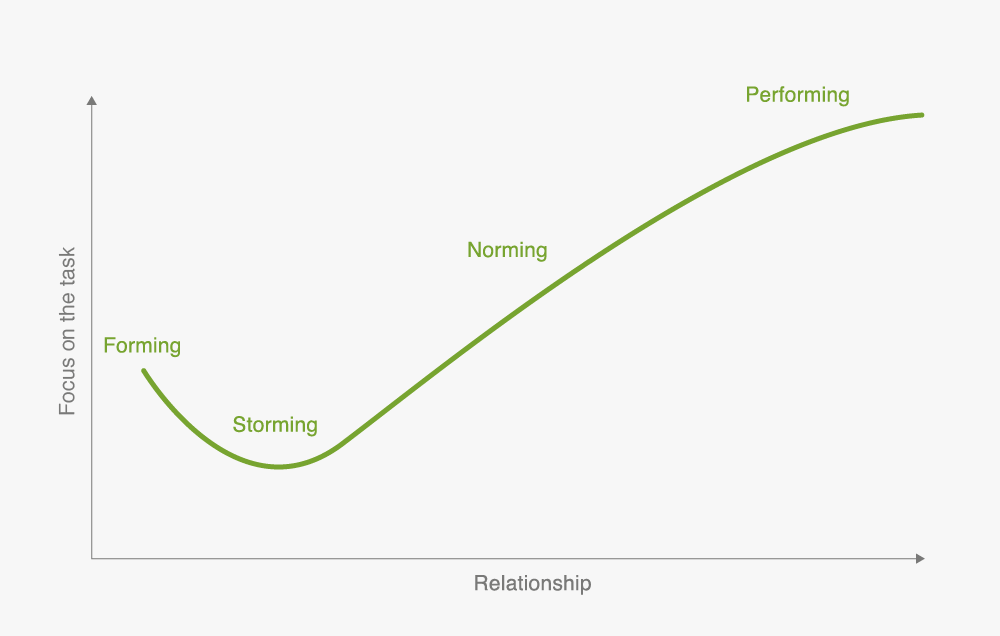The Theory of Team Management
Probably the most famous teamwork theory is Bruce Tuckman’s “team stages model”. First developed in 1965, Tuckman’s model is widely known as a basis for effective team building. Yet how many people really know how to use it?
Tuckman’s model is significant because it recognizes the fact that groups do not start off fully-formed and functioning. He suggests that teams grow through clearly defined stages, from their creation as groups of individuals, to cohesive, task-focused teams.
Tuckman’s Teamwork Theory
Tuckman describes working with a team of social psychologists, on behalf of the U.S. navy. The team studied small group behaviour, from several perspectives. In doing so, Tuckman reviewed 50 articles on group development and noticed that there were two features common to these small groups: the interpersonal or group structure, and the task activity. From this he identified that groups evolved into teams via four common stages.
Firstly an orientation, testing phase which often led to a period characterised by a degree of conflict. This then generally resolved itself, leading to a more socially cohesive phase. Finally, groups settled to a functional phase, during which they focused on role-relatedness. To summarise these four phases, Tuckman coined the oft-quoted terms: “forming”, “storming”, “norming” and “performing”.
Tuckman’s teamwork theory is best illustrated on a graph which shows the link between group relationships (the horizontal axis) and task focus (the vertical axis). The optimal or “performing” position is reached when relationships have developed within the group and it has started delivering with a clear focus on the task.
However, Tuckman’s ideas clearly indicate that it takes time to reach the “performing” stage, and it’s normal for these teams to go through ups and downs as they develop relationships. Particularly in the early period, which is perhaps why Tuckman called it the “storming” phase!
The 4 Phases of Tuckman’s Teamwork Theory

Forming
The initial stage of team development during which individuals have not yet gelled together. Everybody is busy finding their place in the team, sizing each other up, and asking themselves why they are here!
Storming
People begin to see themselves as part of a team. However at this stage they may challenge each other, and the team leader, about such things as what the team is doing, and how things should be done. As the stage title suggests, conflict and confrontation typify this stage, as differences surface. This may result in some loss of performance or focus on the task, as the diagram illustrates.
Norming
This is the phase where team members start to come together, developing processes, establishing ground rules, clarifying who does what, and how things will be done. This phase is characterized by a growing sense of “togetherness”.
Performing
This is the final stage where increased focus on both the task, and on team relationships, combine to provide synergy. Performance is delivered through people working effectively together.
The value of Tuckman’s model is that it helps us understand that teams evolve. It also helps us to consider how they may encounter different problems at different stages of their development.
One limitation of the model may be that it makes team building appear too linear and sequential. Although it’s a useful analytical tool, we must remember that some teams may “loop” around in their development.
For example, not all teams evolve smoothly through Tuckman’s stages but may yo-yo between norming and storming until they either begin to function, or are disbanded! Regardless of limitations, all well-conceived models can be useful in helping us to understand and better manage our circumstances.